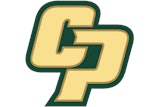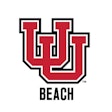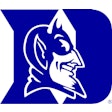
Jill Pepper joined TEAM Coalition in 2002, but only recently has the nonprofit's executive director witnessed an exponential increase in the number of colleges and universities seeking the type of training offered by TEAM (Techniques in Effective Alcohol Management), as more schools make the decision to offer stadium-wide alcohol sales at sporting events. AB senior editor Paul Steinbach asked Pepper about the unique challenges posed by alcohol service within the campus setting.
What took so long?
That's a great question. I want to preface everything with a great appreciation for the fact that the schools that have made the decision are not diving into the deep end head-first. Many of the schools we work with are considering this decision carefully, and they are making the transition at a slow pace that makes it comfortable for those operating the facilities, as well as the organizations running the schools. So in some cases it's provosts, some cases it's the president — there are all different structures, depending on the university. But I think to answer your first question about what took so long, nobody wanted to do it wrong. Everyone wanted to learn from everyone else. And so you have a couple of schools — and I'm going to mention West Virginia as an example, even though they weren't the first, but they were one of the larger schools and they were pretty loud about it, that they saw that this was not only a smart decision from an economic perspective, but it was a smart decision from a security and safety perspective. And it proved to be true. And then a couple more schools took the dive, and it continued to prove to be true, and then the NCAA itself made the decision to serve at its championship events. It has been tested for the College World Series and lacrosse and some of the other championships, but these past men's and women's Final Fours were the first time alcohol was served for the basketball championship, which I think is a big opportunity for the NCAA to prove the concept that alcohol service can encourage responsibility while also increasing revenue. That was a big tipping point, as well as the SEC's decision to no longer ban the schools from deciding for themselves if it makes sense. But that's an important question: Does it make sense for the school?
What specifically kept schools from taking the plunge?
Well, I don't think it's a fear of uncontrolled abuse of the product. What I think it was is a fear of the perception that if there were to be a bad act, how would we handle that situation? And when I say "we" I mean the organizations behind the scenes making sure the experience for the fans is as great as possible. Whether it be the university, the community around the university, law enforcement, the concessionaire, the distributer, the staffing companies, there are so many entities involved in ensuring that the experience for the fans is as positive and as safe as possible. When you introduce alcohol, there are some complexities that perhaps the general public is not really aware of. Fundamentally, to be able to provide a cold beer in a stadium where the concourses aren't as wide as professional sports stadiums and the points of sale perhaps don't have as much refrigeration space — certainly the tap structure that you'll see throughout professional sports venues does not exist in the majority of college stadiums — the infrastructure and manpower make it a big decision. Do you have the capability? It's not just simply filling up the beer truck and opening up the back door and saying, "Have at it." That's never the solution for any organization. So there's both the alcohol management component, but then there's the real infrastructure.
Do colleges want to create a situation were it may not be as easy to get a beer at their games versus a pro game?
I really can't speak to the mindset of the individuals running the stadiums, but I think it's important also to consider who those fan bases are, who's in the stadium on game day. And, yes, there is definitely a student section, but I think if you were to reach out to the Power 5 conferences, their athletics administrators and folks who run their stadiums, and ask what percentage of the total fan base in the building is under 21, I don't know that it's going to be significantly different than the total of the fan base under 21 for a professional football game. My understanding is that the student section is a single section in the entire stadium, and when you've got a capacity of 90,000 plus, then we're talking 10,000, 20,000, maybe 25,000, so less than a quarter of the seating area in your stadium has been allocated for the student section. And, of course, those who are in the building are going to be all generations, but I think that there's a misunderstanding about who's in the building.
Do college students — many of whom are underage, unsupervised for the first time in their lives, rabid about their team, and perhaps in possession of fake identification — pose a particular alcohol management challenge?
Absolutely. But I also think the biggest challenge is what goes on outside the stadium — the tailgating, the drinking that goes on in advance of the games in the sports bars just a few blocks from the stadium, in the fraternity houses or in the college dorms — that's absolutely part of that culture. So I think what's so important to consider is that when you have two choices — the uncontrolled, unsupervised drinking behind a car as option one, as opposed to in a setting where a concessionaire organization has obtained a liquor license and can face very serious consequences if it doesn't enforce responsible alcohol service policies — you're going to pick that second option over the first every time. There are so many opportunities for responsible service, if you are serving, as opposed to choosing not to serve, turn a blind eye and allow some pretty serious stuff to happen before the game.
Once a college decides to serve, is it likely that their game-day staffs will be better trained to recognized impairment?
I think I can answer your question by saying that prior to the past three or four years, when we've seen a pretty significant increase in working with colleges for alcohol management training, there were only a handful of schools over the course of the past 10 years that would reach out to TEAM and say, "We don't serve alcohol, but we want to include your training for our staff because we are dealing with fans coming in impaired before the event and in some cases fans are successful at sneaking in outside alcohol and then we have to deal with that impairment during the game." So there were a handful of schools that leaned on TEAM Coalition to help train their employees, even though they don't serve alcohol. Since schools have started to serve alcohol, we have seen more and more schools reach out for that training. My goal in saying that was to answer your question that there were some schools that could appreciate the value of identifying impairment even if they didn't serve, but as more and more schools are serving, they see that need to identify. I think prior to the service of alcohol, many schools viewed the role of identifying high-risk behavior as someone else's responsibility, whether it was law enforcement or pure security or a third party that they hired to do their ticket taking, ushering and security. So now that the schools are seeing the attention that comes from the service of alcohol, they're viewing their role more directly — they have a direct role in terms of fan behavior and doing all they can to ensure fans are acting responsibly.
Are more schools reaching out to you for impairment training even if they've opted not to serve?
It's still a low number, and that's partly, I would say, my fault — for not pushing what we do more aggressively. We do have a plan in place to get better at marketing our program. And to be fair, the way that we reach the folks that conduct our training is through word of mouth for the most part. We are a 501(c)(3) nonprofit. We don't have a budget for advertising. You're not going to see TEAM Coalition advertisements in Athletic Business or any of the publications of the association members of TEAM Coalition, but we are using our member organizations to help spread the word, whether it's the concessionaires, the alcohol companies or the professional sports leagues. A perfect example was maybe nine or 10 years ago, Notre Dame reached out, and the reason that Notre Dame found out about TEAM is because of the NFL security representatives. The NFL, just like all the other major leagues, works with TEAM and puts us on their agenda for their annual security and facility management meetings, and the security rep for the Colts who does some work with many of the Indiana schools. Notre Dame prides itself on being best-in-class for all experiences from the fan perspective, and so they brought me out and did some TEAM training. That was in 2009, and they still don't serve alcohol for football games.
Aren't people still going to try to smuggle alcohol into stadiums to avoid stadium prices?
I think it's safe to say that there is no policy or procedure that will guarantee the elimination of all bad acts. So yes, there will still be some fans who attempt to sneak in outside alcohol even when alcohol service is available inside through general concessions. But it is also true that by serving alcohol inside, the number of fans who attempt to sneak in outside alcohol, as well as the number of fans choosing to binge drink while tailgating before entering the stadium, will decrease.
Some schools allow students to take alcohol back to the student section, others don't. What policies are you aware of?
I think that the big policy that West Virginia, the University of Texas and Oregon enforced as part of their decision to serve alcohol, and this was a change, was to no longer permit reentry, and by reentry what I mean is you approach the game for the first time, hopefully before kickoff, you get your ticket scanned, and you're in. And then when you decide to leave, that's it. You're done for the day. You cannot reenter the stadium. Prior to the service of alcohol, I think the majority of NCAA football stadiums allowed fans to basically come and go as they please, and there was sort of this general understanding that at halftime you left to go back to your tailgate, have a few more drinks and then come back into the stadium for the second half. And now that you're offering alcohol service inside the stadium, it's an opportunity to eliminate that potential abuse of the product midway through the game. So that reentry change is a big one and I think it's a very important one. I don't necessarily believe that every school that is serving has made that decision, but there are a good number. And that's one of the first things that we recommend, that to some degree what the schools that are serving alcohol are doing is modeling their behavior on what professional stadiums do. And there are no professional stadiums that I'm aware of that allow fans to come and go and they please. And I see many schools that we work with following suit with clear-bag policies and limiting what you are allowed to bring in, which is a great benefit from the alcohol management perspective, because you are minimizing the opportunity for outside alcohol to be snuck in. And it's actually the University of Michigan, which currently does not serve, nor does Michigan State, but I believe both have this policy that the only thing that you're allowed to bring in the stadium is a ticket and a smile. There are no purses, there are no bags, there are no backpacks, nothing. If it doesn't fit in your pocket, you can't bring it in.
What are you hearing from colleges in terms of adopting point-of-sale and service-cutoff policies?
Very consistent policies across the board, and they are mirroring what the NFL does. So it's either end of third quarter for cutoff or the start of the fourth, and you can appreciate there's that time gap that allows fans to get one more run to the concessions stand. I was just at Purdue, and they confirmed that their service for the past two years has been end of third, not start of fourth. The University of Texas is start of fourth, as opposed to end of third, but again it's within that five-minute window. And then the two-drinks-per-ID-per-transaction, but that really does mean per possession, and that's a big part of TEAM training. You as an employee of the venue, regardless of job function, witness a guest walking down the concourse with more than two alcohol beverages in their possession, that is a violation of the policy and it's an opportunity to have a conversation with that guest so that they're aware of the policy and that what they're doing needs to change. If they're holding for someone in the restroom, great, we'll hang out and wait until they come. If they're carrying it back to their seats, great, let's go down there with you and make sure everyone that's getting those beers is over the age of 21.
One school cuts off at the 7:30 mark of the third quarter.
That's West Virginia.
Has that always been their policy?
Always. It's, in my mind, very unusual, but to be fair, I think it's an interesting way of saying that it's a big stadium, and the goal is to make sure that by the end of the third quarter, there's no alcohol being served. And to that point, there are a lot of venues that consider a hard cut as opposed to a soft cut. A soft cut would be at some point on the clock the decision is made to put employees in the back of the line, and as the line moves forward and the employee reaches the front, nobody else can purchase alcohol. And if that's your approach — a soft cut — it's almost impossible to put a time on the clock for when that's going to happen, because every line is different and every transaction takes a different amount of time. But then there are many venues that institute a hard cut — that at this point in time on the clock, we are done serving. It's my understanding that West Virginia looks at that 7:30 as a hard cut, but I can also appreciate lines are long, there are lots of points of sale, and it make take a few minutes to wrap it all up. So 7:30 is their policy.
Arkansas just named an official craft brewery of the Razorbacks. How much are you seeing universities embrace sponsorship opportunities from alcohol providers?
We're seeing a great deal of that, and we think that that is a great partnership because it's those brewers and beer companies that have to maintain the quality of their brand, and in doing so, responsibility has to become part of it. At the University of Texas, for example, Coors Light is the official beer, and Corona Extra is the official import, and TEAM Coalition works with both, and with both brands there are responsibility programs in place to get that message to the fans. We think that is a great way for all those entities to work together in a very strong and impactful way. The reason that I was at Purdue doing training was because of their relationship with Miller Coors, and Miller Coors footed the bill for the training as another example of their commitment to alcohol responsibility as an official partner of the Boilermakers.
Do you ever envision a day when parents and adult community members will be able to purchase alcohol at high school sporting events?
You know that is a really good question, and I have never thought of that before. But I feel like there is a stigma around the service of alcohol as this incredibly dangerous, incredibly negative thing, when the reality is that if you're not showing signs of impairment, if you're over the legal drinking age, if the provider of this beverage has obtained the liquor license, it is a benefit for those who choose to consume it. So this idea that offering service is somehow going to lead to abuse is counterintuitive from a logistical perspective, right? If it's available to purchase and you are following the rules behind the purchase, there is no logical reason why it would be abused. When it's not available for purchase, and consumers want it, then you're going to do things like sneak it in, hide it inside of a Big Gulp cup or a coffee mug, and drink it without having the benefits of the organization that got the liquor license to monitor and control that consumption. So while I have never thought of it before this conversation, I can't come up with a reason why it shouldn't be sold at any level as long as the same reasonable efforts are in place.
What is your must-have advice for schools still on the fence about serving alcohol stadium-wide?
The first thing that they should do is reach out to their counterparts at the schools that are serving and get from actual individuals who have gone through the process what they've learned, and learn from that, take full advantage of the professionals and the organizations that have chosen to do it and find out what works. I would not recommend starting from scratch. Another thing to consider is if there is a loud voice from the restaurant and bar owners around the stadium who are saying, "Don't do it — it's only going to be a negative impact," you really have to question what their concerns are, and I think it's more taking money out of their pockets. I'm not disagreeing. If you could stay in their bar and watch the game and drink all the beer that they're able to serve in the bar, they're going to want to keep their patrons there. But this idea that alcohol service inside is going to lead to some horrible, negative detriment to the community is just not accurate. And if you're already concerned about alcohol abuse outside the stadium, that's actually the perfect reason to consider service inside, because the big message that I know is buried in my answer here is that with service comes greater enforcement. When you're serving inside, the outside tailgate enforcement needs to go hand in hand. It cannot be a free-for-all outside, because then you're dealing with the effects of how much was consumed beforehand when the guests come in, and it might be a 20-, 30-, 40-minute delay until the alcohol that they consumed outside hits them when they're inside. That could happen whether you're serving or not, right? So by serving inside, you have a greater opportunity to show more enforcement outside because you have responsible adults being permitted to drink inside. You're not forcing them to consume all their alcohol outside.
Once a school opts for service inside, how far in advance of actually serving should training begin?
When you are preparing to serve alcohol, there are so many decisions to make in terms of policies and procedures. When do you cut off service? How many drinks per transaction? Are you going to wristband? What products are going to be sold? What's the alcohol by volume of those products? What containers and how large? What do you do with outside alcohol? What do you do if there are two beverages as a maximum per person and you see someone walking around with four? Getting to an answer to all of those questions could take six months, because you want to make sure all entities involved — from law enforcement to medical to the outward public relations team — they're communicating all of this information internally and externally, but then the actual training should occur within a week or so of your first game, so that it's fresh in the minds of your employees. You want the training to be as close to that first game as possible, but to get to that final training product, you need six months at least to sort through all those questions, and that's what TEAM will help you do.
The other answer to your question involves the liquor license. There are some states where obtaining a liquor license can take a year or more. So obtaining the liquor license is a huge hurdle that may also require, literally, infrastructure changes. When UT-Austin applied for their general concessions liquor license, they already had a liquor license for their suites and clubs, but they had to change the footprint of the building to some degree to limit the way people could walk around from club and suites to concourse so as to distinguish the liquor license for club and suites, which included spirits, from the liquor license for the general concessions, which was beer only. So there's a lot of infrastructure and physical layout review that has to be done — and changes made potentially — in order to obtain the liquor license.
Who typically holds the liquor license?
Every school is a little bit different, but for the most part, it's the concessionaire. The concessionaire entity holds that liquor license, but in many cases it's a joint effort and there are multiple organizations involved. But typically there's one name on a liquor license and in many cases it's the concessionaire.
Any final thoughts?
The concessionaire entities that serve food and beverage for professional stadiums in many cases are doing it at the college level. As an organization they're bringing the same policies and procedures to the college level. So that's a great win. But I think that other big missing piece that we started our conversation with — so many college stadiums have a 90,000, 95,000, 100,000 capacity and they're still in a bleacher setting, there's so little room between the rows, and they don't even have cup holders, so it is truly an infrastructure challenge. And, obviously from an alcohol management perspective, we don't want it to be the case that it's a negative experience for the guest if the line is so long or if when they get to their seat there's nowhere to put their beers. So we're trying to encourage that full thought process. Can you bring it in and serve it successfully?
This article originally appeared in the November | December 2019 issue of Athletic Business with the title "How colleges should prepare for stadium-wide alcohol service." Athletic Business is a free magazine for professionals in the athletic, fitness and recreation industry. Click here to subscribe.





































